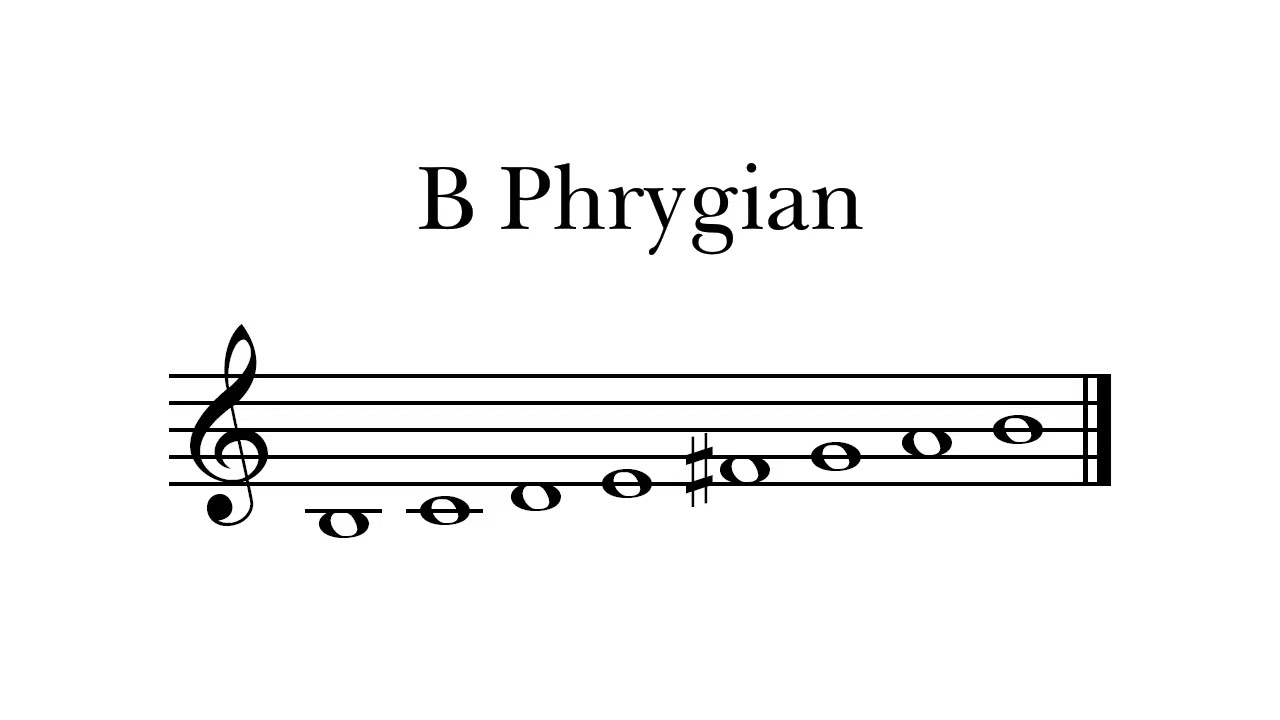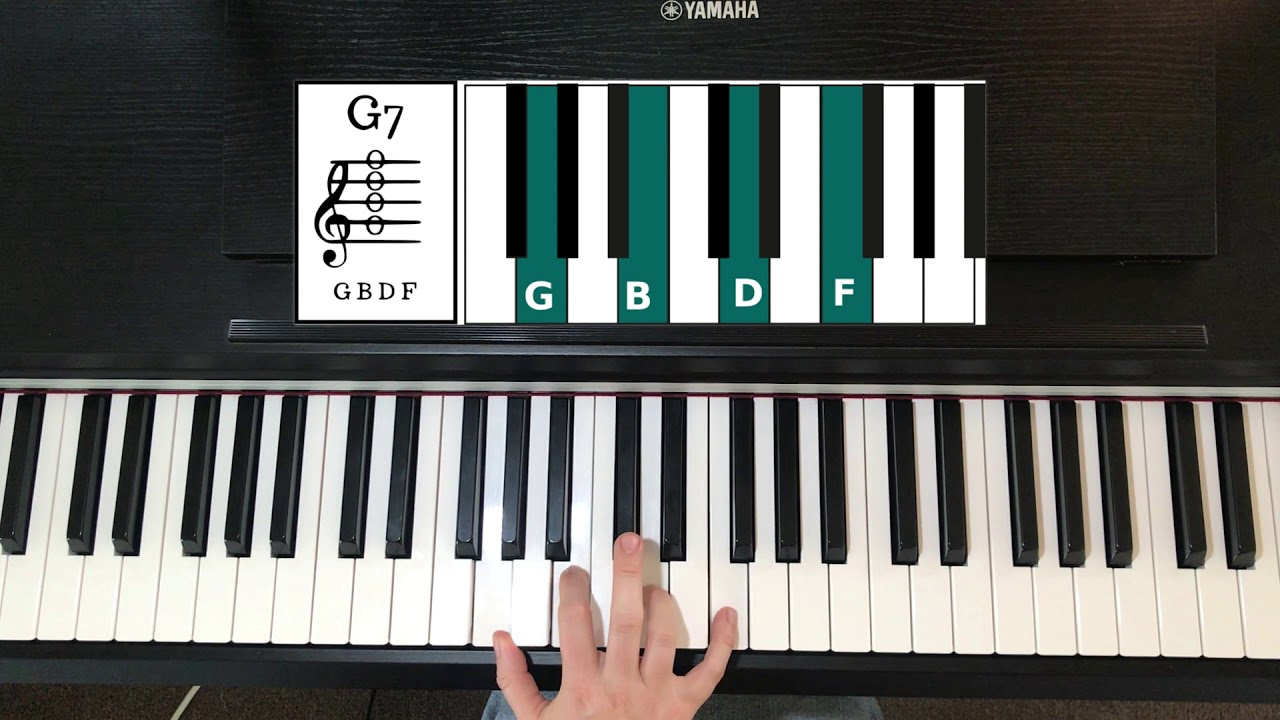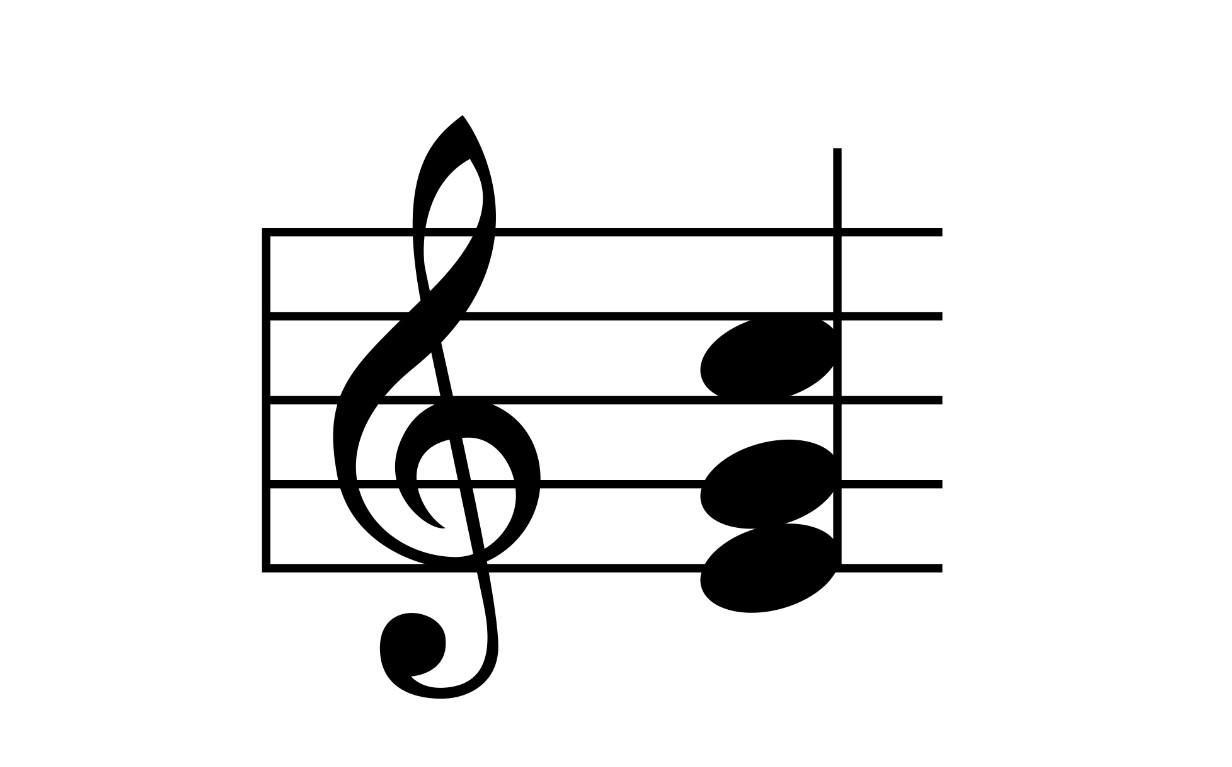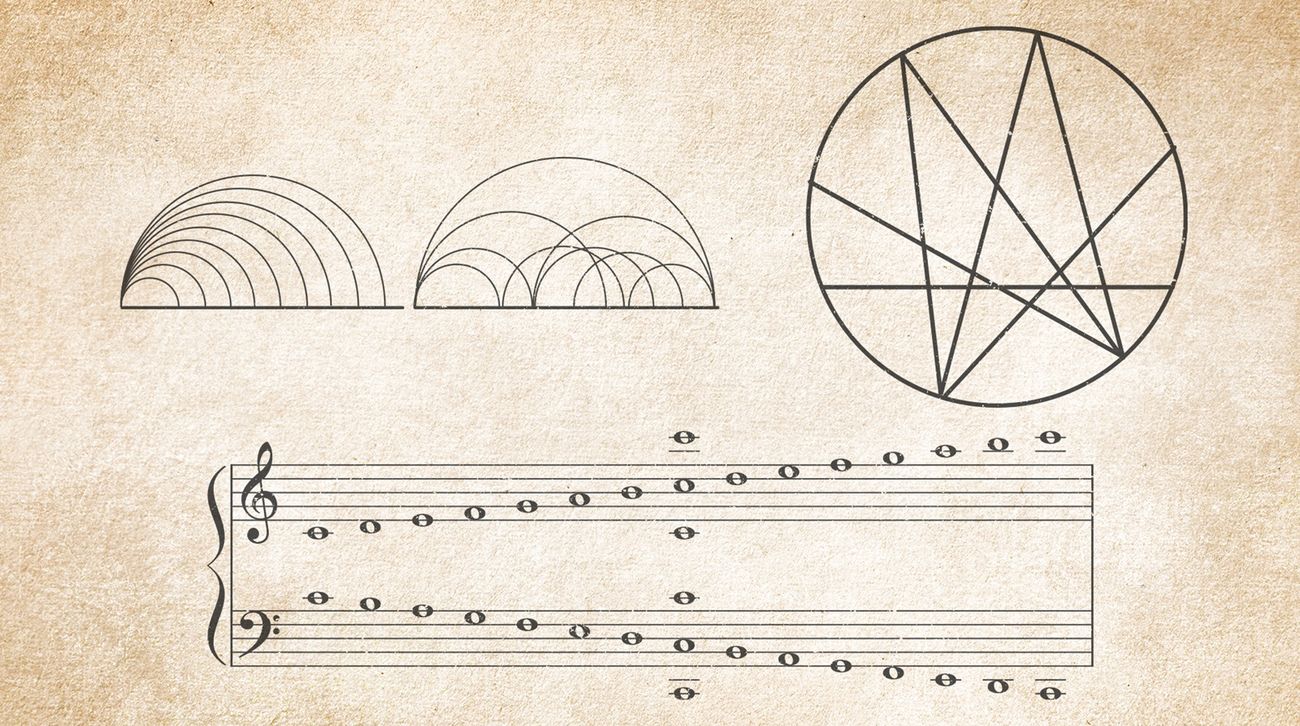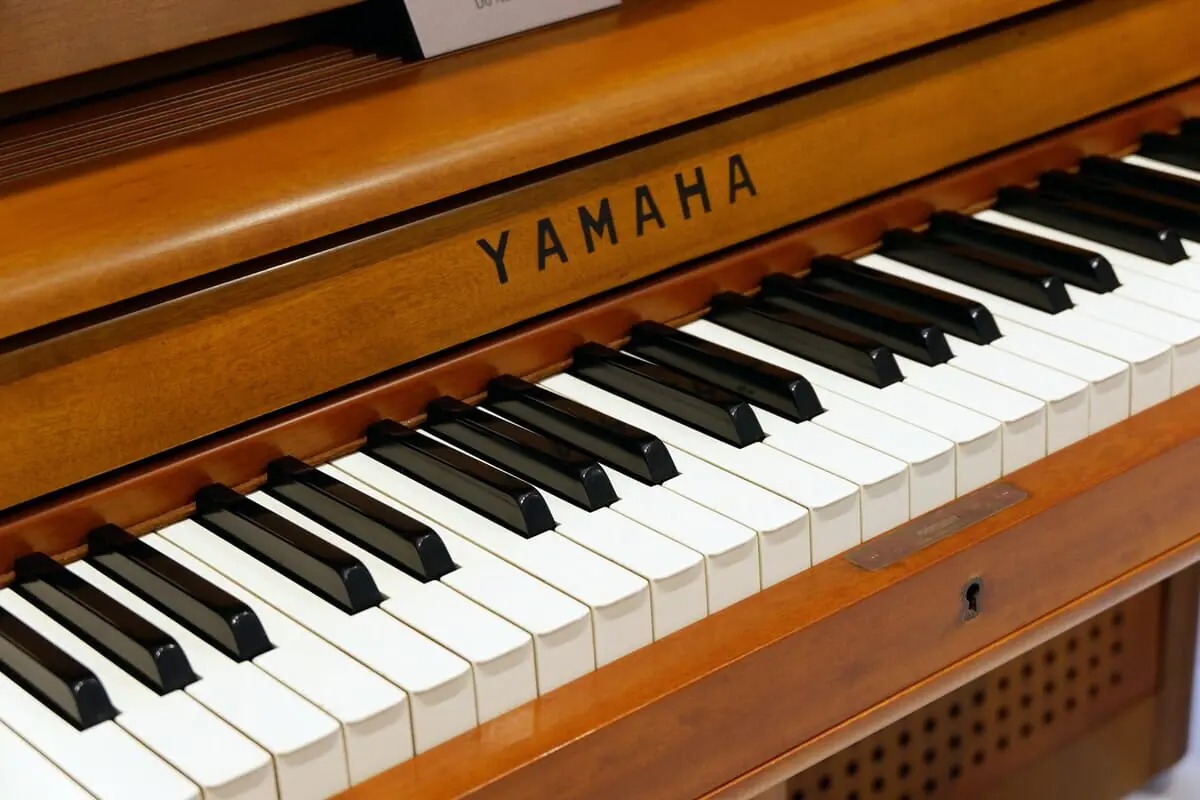Home>Production & Technology>Music Theory>What Is A Minor 6 Chord In Music Theory


Music Theory
What Is A Minor 6 Chord In Music Theory
Published: January 31, 2024
Discover the concept of a minor 6 chord in music theory and its significance. Enhance your understanding of music theory with this comprehensive guide
(Many of the links in this article redirect to a specific reviewed product. Your purchase of these products through affiliate links helps to generate commission for AudioLover.com, at no extra cost. Learn more)
Table of Contents
Introduction
Music theory is the study of the principles and elements that govern the creation and understanding of music. It provides a framework for composers, musicians, and music enthusiasts to analyze, interpret, and communicate musical concepts. One fundamental aspect of music theory is the understanding and utilization of chords.
A chord is a group of three or more notes played simultaneously, creating a sense of harmony. It forms the foundation of melodies, harmonies, and progressions in music. Chords come in many different types, each with its own unique sound and character.
In this article, we will delve into the world of chords and explore the intricacies of a specific type: the minor 6 chord. We will discuss its structure, notation, voicing, inversions, and common uses. By the end, you will have a solid grasp of what a minor 6 chord is and how it can be applied in music compositions.
So, whether you are a budding musician, an aspiring composer, or simply someone curious about music theory, join us on this captivating journey into the fascinating realm of the minor 6 chord.
Understanding Chords in Music Theory
In order to grasp the concept of a minor 6 chord, it is important to have a foundational understanding of chords in music theory.
A chord is a harmonic unit consisting of three or more notes played simultaneously. It provides a sense of harmony, creating a stable and integrated sound. Chords are formed by combining different intervals, which are the distances between the pitches of the notes.
In music theory, there are various types of chords, including major chords, minor chords, dominant chords, diminished chords, and augmented chords. Each type carries its own unique tonal quality and emotional resonance.
Major chords are often described as bright, happy, or triumphant, while minor chords are associated with a sense of sadness, melancholy, or introspection. Dominant chords convey tension and a need for resolution, while diminished chords create a dissonant and unstable sound.
Triads are basic three-note chords consisting of a root, a third, and a fifth. The quality of a triad, whether major or minor, is determined by the distance between the root and the third. In a major triad, the distance between the root and the third is a major third, while in a minor triad, it is a minor third.
Extensions or added tones can be incorporated into chords to create more complex and rich harmonies. The minor 6 chord is one such extension that adds an additional interval to a minor triad.
Now that we have a foundational understanding of chords, let us explore the specific characteristics and properties of the minor 6 chord in greater detail.
What is a Minor 6 Chord?
A minor 6 chord is a type of chord that combines the elements of a minor triad and a major 6th interval. It is formed by adding the major 6th interval above the root note of a minor triad.
To create a minor 6 chord, start with a minor triad, which consists of the root, minor third, and perfect fifth. Then, add the major 6th interval on top of the fifth.
For example, let’s take the C minor triad, which consists of the notes C, E♭, and G. To turn it into a C minor 6 chord, we would add the note A, which is a major 6th above the root. The resulting notes of the C minor 6 chord would be C, E♭, G, and A.
The minor 6 chord has a distinct character that combines elements of both sadness and sweetness. It possesses a mellow and introspective quality, creating a sense of longing or nostalgia. The addition of the major 6th interval adds a touch of brightness and warmth to the overall sound of the chord.
It is important to note that the minor 6 chord is different from the minor 7 chord. While both chords are minor in quality, the minor 7 chord adds a minor 7th interval instead of a major 6th. The minor 6 chord has a softer and more delicate sound compared to the minor 7 chord.
Next, we will take a closer look at the structure and notation of a minor 6 chord, further unraveling its musical characteristics.
Structure of a Minor 6 Chord
The structure of a minor 6 chord is built upon the foundation of a minor triad, with the addition of a major 6th interval. Let’s break down the structure of a minor 6 chord step by step.
1. Root: The root note is the starting point of the chord. It gives the chord its name and serves as the foundation for the rest of the notes. For example, in the key of C minor, the root note would be C.
2. Minor 3rd: The second note in the chord is a minor 3rd above the root. It provides the characteristic “minor” quality to the chord. In the key of C minor, the minor 3rd would be E♭.
3. Perfect 5th: The third note in the chord is a perfect 5th above the root. It adds stability and richness to the overall sound. In the key of C minor, the perfect 5th would be G.
4. Major 6th: The final note that distinguishes the minor 6 chord is the major 6th interval above the root. It brings a touch of brightness and sweetness to the chord. In the key of C minor, the major 6th would be A.
Putting it all together, the structure of a C minor 6 chord would be C (root), E♭ (minor 3rd), G (perfect 5th), and A (major 6th).
It is important to note that the structure of a minor 6 chord remains the same regardless of the key. The only thing that changes is the specific notes involved, depending on the root note of the chord.
Now that we understand the structure of a minor 6 chord, let’s move on to the notation used to represent this chord in music.
Notation of a Minor 6 Chord
In music notation, a minor 6 chord is typically represented using the lowercase letter “m” followed by the number “6”. The “m” stands for “minor,” indicating the quality of the triad, while the number “6” signifies the addition of the major 6th interval.
For example, using the key of C minor, the notation for a C minor 6 chord would be written as Cm6. The lowercase “m” indicates that it is a minor triad, and the “6” indicates the presence of the major 6th interval.
It is also common to see the use of the triangle symbol (∆) above the chord symbol to indicate the major quality of the 6th interval. So, an alternative notation for C minor 6 would be Cm∆6.
It is worth noting that the chord symbol can be written in various formats and notations, depending on the context or the personal preference of the composer or musician. However, the standard notation of Cm6 or Cm∆6 is widely recognized and understood in music theory.
Understanding the notation of a minor 6 chord is essential for reading and interpreting chord charts, lead sheets, and other musical notations. It allows musicians to quickly identify and play the desired chord voicing in a piece of music.
Now that we have explored the notation of a minor 6 chord, let’s move on to discuss the voicing and inversions of this chord.
Voicing and Inversions of a Minor 6 Chord
Voicing refers to the specific arrangement and order of the notes within a chord. It determines the overall sound and character of the chord. When voicing a minor 6 chord, there are various ways to arrange the notes to create different textures and tonal qualities. Let’s explore some common voicings of the minor 6 chord:
1. Root Position: In root position, the root note is placed at the lowest pitch. For example, in a Cm6 chord, the notes would be arranged with the C as the lowest note, followed by E♭, G, and A.
2. First Inversion: In the first inversion, the root note is moved to the highest pitch. Using the Cm6 chord as an example, the notes would be arranged as E♭, G, A, and C. The first inversion gives the chord a slightly different texture and emphasizes the third of the chord.
3. Second Inversion: In the second inversion, both the root note and the third are moved to higher pitches. Using the Cm6 chord, the notes would be arranged as G, A, C, and E♭. The second inversion provides a unique sound by emphasizing the fifth of the chord.
4. Close Voicing: Close voicing refers to arranging the notes of the chord as close as possible within a small range. This results in a dense and compact sound. For example, a close voicing of the Cm6 chord would be E♭, G, A, and C arranged closely together.
It is important to experiment with different voicings and inversions of the minor 6 chord to find the desired sound for a particular musical context. Using different voicings can add variety, depth, and richness to chord progressions and melodies.
By understanding and practicing different voicings of the minor 6 chord, musicians can develop their arranging and composing skills, creating unique and compelling musical arrangements.
Next, let’s explore the common uses of the minor 6 chord in music.
Common Uses of the Minor 6 Chord
The minor 6 chord is a versatile and expressive chord that finds its place in various musical genres and compositions. Let’s explore some common uses of the minor 6 chord:
1. Progressions: The minor 6 chord is often used in chord progressions to add subtle and melancholic flavors. It can create a sense of tension and release when combined with other chords, such as the dominant 7th or major chords. The movement from a minor 6 chord to a major chord can evoke a bittersweet or nostalgic emotion in the listener.
2. Jazz Music: The minor 6 chord is a staple in jazz music. It is frequently used in jazz standards and improvisations to add color and sophistication to harmonic progressions. In jazz, musicians often substitute the minor 7th chord with a minor 6 chord to create a smooth and elegant sound.
3. R&B and Soul Music: The minor 6 chord is also prevalent in R&B and soul music. It is used to create emotional depth and soulful vibes. The mellow and introspective quality of the minor 6 chord complements the heartfelt and expressive nature of these genres.
4. Ballads and Slow Songs: Due to its reflective and melancholic nature, the minor 6 chord is commonly found in ballads and slow songs. It adds a touch of vulnerability and sensitivity to the musical arrangement, enhancing the emotional impact of the lyrics and melody.
5. Film and Soundtrack Composition: The minor 6 chord often serves as a powerful tool in film scoring and soundtrack composition. It can evoke a sense of mystery, longing, or suspense, making it ideal for creating atmospheric and evocative soundscapes.
6. Pop Music: Although not as prominent as in jazz or R&B, the minor 6 chord can still be found in pop music. It is used to add an interesting twist or unexpected modulation within a song, providing a unique flavor to the composition.
These are just a few examples of the many contexts where the minor 6 chord is utilized. Its ability to convey both sadness and sweetness makes it a valuable asset for composers and musicians seeking to evoke specific emotions and create captivating musical experiences.
Now that we have explored the common uses of the minor 6 chord, let’s conclude our exploration of this fascinating chord.
Conclusion
The minor 6 chord is a captivating and versatile chord that adds depth, emotion, and nuance to music compositions. With its combination of a minor triad and a major 6th interval, it creates a unique blend of melancholy and sweetness. Understanding the structure, notation, voicing, and common uses of the minor 6 chord allows musicians to expand their musical vocabulary and create more expressive and dynamic musical arrangements.
Whether it’s enhancing the harmonic progression in jazz improvisations, adding soulful vibes to R&B compositions, or creating atmospheric soundscapes for film scores, the minor 6 chord finds its place in various genres and musical contexts. Its ability to evoke specific emotions and convey a sense of longing or introspection makes it a powerful tool for composers and musicians.
By familiarizing ourselves with different voicings, inversions, and progressions involving the minor 6 chord, we can enhance our compositional skills and imbue our music with a rich and captivating tonal palette. The minor 6 chord offers endless possibilities for creative exploration and experimentation.
So, whether you are a musician exploring new chord progressions, a composer looking to add depth to your compositions, or simply a music enthusiast curious about the intricacies of music theory, the minor 6 chord invites you to dive into its melancholic yet alluring sound.
By delving into the realm of chords and exploring the unique qualities of the minor 6 chord, we open ourselves up to new musical possibilities and expand our understanding of the rich tapestry of harmony in music. So embrace the beauty of the minor 6 chord and let its gentle melancholy and sweet allure captivate your musical senses.

